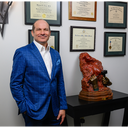I'm an African-American woman in my mid-twenties who has a history of keloid scarring. Sometimes I scar, sometimes I don't. My skin responds well to Kenalog injections Is it possible to have a hip-to-hip TT scar placed as low as the pubic area with a little loose skin left to prevent tension that I suspect would aggravate scar? Can I have Kenalog injections at time of TT closure? and would taking vitamins for months i.e. A,C,E,omega3s truly encourage more supple, healthier, better skin healing?
Answers (12)
From board-certified doctors and trusted medical professionals
Dr. Mark D. Epstein, MD, FACS

Dr. Mark D. Epstein, MD, FACS
Board Certified Plastic Surgeon
Answer
Dr. Steven S. Carp, MD

Dr. Steven S. Carp, MD
Board Certified Plastic Surgeon
Answer
Dr. Pablo Prichard, MD
Dr. Pablo Prichard, MD
Board Certified Plastic Surgeon
Answer
Dr. Steven Wallach, MD
Dr. Steven Wallach, MD
Board Certified Plastic Surgeon
Answer
Dr. Brian J. Lee, MD
Dr. Brian J. Lee, MD
Board Certified Plastic Surgeon
Answer
Dr. Scott E. Kasden, MD, FACS
Dr. Scott E. Kasden, MD, FACS
Board Certified Plastic Surgeon
Answer
Dr. William B. Rosenblatt, MD
Dr. William B. Rosenblatt, MD
Board Certified Plastic Surgeon
Answer
Dr. Robert L. Kraft, MD, FACS

Dr. Robert L. Kraft, MD, FACS
Board Certified Plastic Surgeon
Answer
Dr. Norman Bakshandeh Day, MD, FACS
Dr. Norman Bakshandeh Day, MD, FACS
Board Certified Plastic Surgeon
Answer
More Tummy Tuck Questions
See all Tummy Tuck Q&AWE SEND PRETTY
EMAILS
What’s trending? Who’s turning heads? Which TikTok myths need busting? We’ve got you. No fluff, no gatekeeping—just real talk. Get our free, unfiltered newsletter.
